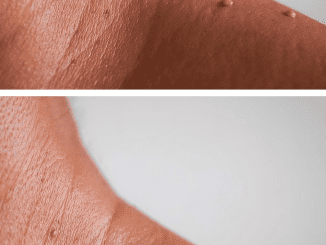The stereotype that strokes only happen to the elderly is rapidly crumbling. A growing body of research reveals a disturbing truth: strokes are increasingly striking young adults—some in their 20s and 30s. From high blood pressure to lifestyle changes, neurologists are raising red flags. So, what’s driving this trend—and what can we do about it?
Let’s break down the science, the statistics, and the solutions behind this growing crisis.
A Global Wake-Up Call: Stroke Is No Longer Just for Seniors

Historically, strokes were almost synonymous with old age. But new data from The Lancet Neurology confirms a shift. Between 1990 and 2021, stroke cases among people under 55 have been steadily climbing, particularly in low- and middle-income countries.
In the United States, the CDC reported a 15% increase in strokes among adults aged 45–64—and a 14.6% increase among those aged 18–44. Even more striking? Strokes in people under 50 now make up about 10–14% of all cases in the U.S. and Europe.
This trend is more than a blip. It’s a sign of deeper health issues being ignored or misunderstood.
Why Are Young People Having More Strokes?
Uncontrolled Hypertension: The Silent Killer
High blood pressure remains the single biggest risk factor for stroke. But the most alarming fact? Young people often don’t know they have it. According to recent NHANES data, over 83% of hypertensive U.S. adults exceed 130/80 mmHg. Among those under 45, half don’t even know they’re hypertensive.
Left untreated, high blood pressure causes long-term vascular damage—making a stroke before age 50 far more likely.
Video : Stroke explained
Obesity and the Metabolic Crisis
Obesity among adults aged 18–39 has doubled since 1999. Visceral fat triggers inflammation, insulin resistance, and abnormal cholesterol—setting the stage for stroke.
The Global Burden of Disease Study links an 88% increase in disability-adjusted life years (DALYs) to high body mass index. This isn’t just about weight—it’s a full-body inflammatory crisis that accelerates vascular damage.
Smoking, Vaping, and Drug Use
Traditional cigarette use may be dropping, but vaping and nicotine alternatives have taken over. These substances damage blood vessels and increase the risk of clot formation.
Recreational drug use—especially cocaine, amphetamines, and synthetic cannabis—can lead to vasospasms, vasculitis, and hypertensive crises, which can cause hemorrhagic strokes even in healthy young adults.
Other Underestimated Stroke Triggers in Youth
Migraines with Aura
People who suffer from migraines with aura have twice the risk of ischemic stroke. Theories suggest cortical spreading depression and endothelial dysfunction play a role.
That risk climbs higher when combined with oral contraceptives or smoking. It’s critical to identify this trio early and intervene with customized prevention strategies.

Pregnancy and Birth Control
During pregnancy and postpartum, blood becomes more prone to clotting. In fact, women face a threefold increase in stroke risk during this period. Add in hormonal contraceptives—especially those containing estrogen—and the danger multiplies.
Women with migraines, clotting disorders, or family history need individualized medical guidance when choosing contraceptive methods.
Hidden Heart Conditions: Patent Foramen Ovale (PFO)
Up to one-third of cryptogenic strokes (no known cause) in young adults are linked to a PFO—a tiny hole in the heart that allows clots to bypass the lungs and head straight to the brain.
Many people don’t even know they have it. But once identified through echocardiography, a simple closure procedure can dramatically reduce stroke risk.
Arterial Dissection from Trauma or Exercise
Ever heard of someone having a stroke after yoga or a minor car crash? That’s arterial dissection. A tear in the inner lining of neck arteries can block blood flow to the brain.

This is the leading cause of stroke under age 45. Diagnosis via CT or MRI and early blood thinners are key to preventing permanent damage.
Autoimmune and Coagulation Disorders
Diseases like lupus, antiphospholipid syndrome, and sickle cell anemia increase the risk of clots in young people. These patients require extra neurological vigilance and preventive care.
Social Inequity and Environmental Risks
Lack of Education and Awareness
According to the CDC, individuals without a high school diploma have the highest increase in stroke cases. Without access to health information or basic medical screening, many young people miss early warning signs.
Air Pollution and Urban Heat
Prolonged exposure to PM2.5 particles causes blood vessel inflammation and constriction. And with global warming, thermal stress is emerging as a new stroke trigger, especially in densely populated cities.
Access to Care
In rural areas, stroke symptoms often go unrecognized or untreated until it’s too late. Delayed treatment means missed opportunities for clot-busting drugs or surgeries—leading to worse outcomes and longer recoveries.

The Long-Term Cost of a Young Stroke
Strokes don’t just impact the body—they steal decades of productivity, independence, and quality of life. Survivors often deal with permanent disabilities, emotional trauma, depression, or loss of career identity.
Families absorb the burden, often stepping into caregiver roles. Rehabilitation costs, lost income, and reduced mobility add up to a massive economic and social toll—far more than in older stroke patients.
How Can We Reverse the Trend?
Start Prevention Early
Young adults need regular screening for blood pressure, cholesterol, and diabetes—ideally before age 30. School and workplace wellness programs should include stroke education and digital tools for monitoring health metrics.
Promote Healthy Lifestyles
Encourage plant-based eating, daily physical activity, stress reduction, and smoke-free spaces. These choices fight inflammation and reduce stroke risk across the board.
Use Tech for Better Monitoring
Health apps that track blood pressure, pulse, and medication compliance can bridge the gap between doctor visits—especially for young people with busy or low-access lives.
Video : Hand Exercises after Stroke
Conclusion
The rise in strokes among young people is a red flag that can’t be ignored. It’s a sign that traditional risk factors like hypertension, obesity, and poor diet are affecting us sooner—and harder—than before.
But this crisis isn’t inevitable. With targeted education, early detection, and personalized prevention strategies, we can stop strokes before they start. Let’s protect the next generation by acting now—because a healthy brain shouldn’t have an expiration date.


